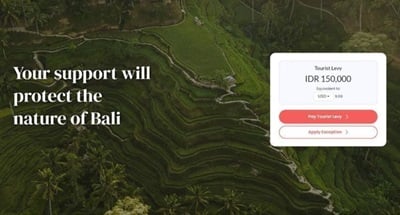My day started early on the Laikipia plains, as I had to catch my mid-morning flight from the Nanyuki airfield via Wilson Airport to the Masai Mara. The first leg of the journey took place in a Cessna Caravan, nearly full to capacity, including renowned Kenyan artist Kuki Gallmann, while the onward flight was to take place in a Twin Otter and that flight was completely booked up.
The stopover at Wilson Airport extended through lunch time, and passengers have several options on where to eat, including the Aero Club of East Africa’s restaurant, where my hosts John Buckley and Anu Vohora of SafariLink took me – a pleasant experience on a sunny day to sit outside on the deck.
The chat over lunch gave me ample opportunity to update my knowledge about operations from Wilson Airport, the continent’s busiest airport for light aircraft, to the safari parks and the Kenyan coast, and of late also to Kisumu, the third Kenyan city on Lake Victoria. I learned that SafariLink has, since its inception in 2004, grown to become the third largest airline operating from Wilson and now flies scheduled services to all the main national parks of Amboseli, Tsavo, Samburu, Shaba, Masai Mara, and the Nanyuki airfield, but also stops on demand in Naivasha, the Chyulu Hills, and Lewa Downs. Daily services are also available to Lamu, Kiwayu, and Ukunda at the Kenyan coast, besides of course offering charters to the less-frequented national parks or game reserves.
Their state-of-the-art fleet of 5 Cessna Caravan forms the back bone of the operation, but a Twin Otter DHC6-300 and a Bombardier Dash 8 are also available should loads make the use of a larger aircraft necessary.
In no time, lunch and conversation had to end to avoid delaying or missing my Mara flight, and then, presto, off we were with a full load of passengers via Naivasha to the Mara, where after dropping off and collecting passengers at several fields we finally landed at the Siana Springs airstrip just outside the game reserve with the camp vehicle waiting for us with cold towels and cold drinks readily available.
The three of us, a Norwegian couple I already met at the Amboseli Porini Camp and myself, then set out for the 45-minute drive towards the Porini Mara Camp, located on the Ol Kinyei Conservancy, which is exclusive to Porini and extends over nearly 9,000 acres, adjoining the Masai Mara Game Reserve proper.
Across communal Masai-owned ranchland our drive brought us towards the conservancy land, and what an eye opener that was. The absence of cattle and goats had brought out and maintained much better vegetation, and plains game was soon spotted along the track, which curved its way into the heart of the conservancy, already expertly explained by our guide, Wilson, who was proud of what their families’ land had become.
Without notice, we suddenly saw the camp, well hidden along a little stream, called the Olaitole river, which stands for “a place where salty water comes from underground, surrounded by papyrus reed” – quite a long translation from the single word used in the Masai language it appeared.
The six tents, set under tall shade trees, were really not seen until really reaching the grounds of the camp, so well concealed in the vegetation, but the outstanding feature here was the mess and lounge tent, which stood on a little hill overlooking the grounds and giving a vantage view into the surrounding area.
Here, as an exception, Porini uses the more traditional size of safari tents, still with an adjoining bathroom and a viewing deck made of wooden planks in front, with easy chairs permitting for bird watching or spotting game across the river, which had dwindled to a little streamlet at the time I visited, although it was a raging current just two weeks previously, when the water rose up to the platforms of the tents we were told, following days of torrential rain as the long drought eventually broke.
The manager, David Githaiga, gave the inevitable, and in fact much needed instructions, in particular drawing our attention to the fact that some 23 lions were resident on the conservancy and that we were under no circumstances to stray outside the camp unless going on a guided and escorted walk. We did listen, as all visitors should, those with experience in particular – they often think they know it all and then end up in trouble, as the camp is deep in the wild and no fences or ditches offer protection from game and predators, which often wander through the camp itself, especially at night.
Like at Amboseli Selenkay, here, too, the Masai families who joined hands with Porini to create the conservancy, are the main beneficiaries, as with the exception of the manager, the chef, and the sous chef, all other staff are drawn from the community, which owns the land. Hence, some 27 families now enjoy a monthly income by their breadwinner, selected in consultation with their elders, who then, besides their salary, also make very good tips from satisfied guests. Porini recommends that a couple staying for two nights, should consider a tip of about 1,000 Kenya shillings, or about US$15 US through the staff box in the mess tent, while spotters, trackers, and guides should receive a similar amount, directly. Let me point out, however, that the staff love their jobs, and while gratefully accepting a tip for a job well done beyond the call of duty at the end of one’s stay, they do not stick their hand out the moment they have done something and never ever give a guest the feeling that “no tip no service” as surely readers have observed elsewhere all too often.
Good occupancy in the camps hence brings added money to the Masai communities, besides the annual ground rent and per bed night royalty payable monthly by Porini and – it is understood – religiously paid out, no excuses or delays.
It may be for this reason that other landowners, seeing the success the participating Masai families made out of their partnership with Porini, are keen to also join the scheme, and offers are apparently on the table already to substantially enlarge the Ol Kinyei conservancy in coming years, when, or if, these negotiations and discussions bear fruit.
I was told though, that those now queuing up were initially apprehensive, having to move their livestock, cattle, and goats off the conservancy land, but after all, seeing is believing, and the cash flow witnessed for the other families on the inside of the scheme must have been a strong factor to change their mindset towards this sort of community-based conservation and tourism approach.
The camp also purchases milk, boiled before use and consumption, from their neighbors as it does purchase goat meat for the staff; some added incentive for the Masai families who have signed up for the conservancy land deal.
A conservancy warden, appointed by the Masai families, acts as intermediate between Porini and the community, and is monitoring the various activities on the conservancy land and also makes sure that jobs, when becoming available, are fairly shared between families, with the elders having the final say on who gets to work in the camp.
Another ground-breaking assist by Porini to the families is their support to each and every one of them to obtain their own individual title deeds for the land, which they own directly, an otherwise almost impossible task for the Masai, so far away from the lands office in Nairobi and blissfully unaware of the bureaucracy and formalities needed to attain that valuable piece of paper. Community health and education also feature in Porini’s assist programs towards their land owners to give back as much as possible to their landlords, yet something rarely seen otherwise in Kenya or else the region for that matter, where the bottom line often has company bosses look the other way when the needs of their neighboring communities come to their attention.
And, the obvious question asked, as was at the other Porini camps, does the income also go towards educating the girls in the community, i.e., sending them to school and beyond for tertiary education, can only be answered with a resounding YES, as all the staff confirmed that the money the communities earn is equally spent on educating their sons as well as their daughters. However, in all the camps, only the young men are employed – as for instance also seen at the Apoka Safari Lodge in Kidepo where the owners have done a similar deal with the neighboring Karimojong, although that is not a conservancy but a park.
And before ending singing their praise, Porini also supports the guiding school, Koiyaki, which is located nearby and had several staff of Porini camps in the Mara training there and getting the essential skills on birding, interpretations an explanations, spoor reading, and tracking.
So all settled in after arrival, camera and netbook batteries were handed to the manager for re-charging, and after a little rest time till late afternoon, which yours truly used to take notes and stroll around with a guard in tow, time was already there for the evening game drive cum sundowner, a feature enjoyed at all the other Porini camps, too.
This late game drive often reveals birds doing the last of their day’s business of feeding or courting, and as the sun then begins its rapid descent towards and below the horizon, the birdsong soon too fades away, only to be replaced by the sounds of the emerging night.
As we drove up to the vantage view point for the sundowner, a couple of elephant also made their way into the same direction, and as we then stood with our guides, G&T in hand, admiring the sunset behind a nearby tree, the elephants – a stone’s throw away – walked by undisturbed by us, minding entirely their own business.
With the sun gone, we set out for a night drive, possible on a conservancy while not inside the park itself, during which we encountered numerous spring hares, the miniature version of the Australian kangaroo, and had sightings of the shy bat-eared foxes, too, who had just come out of hiding. Hyenas were on the prowl, advancing on a group of Thomson and Grant gazelles, while some jackals, alerted to the presence of several hares in the spotlight of our vehicles, gave chase the moment they saw them run off.
Time flies when stopping here and there, as we did to see owls pegged on tree branches, and followed the flight of night jars, disturbed by our approach. When reaching camp, our canvas shower buckets were promptly filled with hot water to allow for a quick shower, before we were escorted again to the mess tent for our dinner.
The three of us were joined by the manager who was happy to share many of the experiences he had while in camp, giving us extra information and partaking in the talk about our previous locations while on safari. A good and very drinkable Chilean wine selection was offered, as were cold beers, but if one is serious about getting up in darkness the next morning to set out for an early game drive at the break of dawn, too much alcohol will simply not do, so consumption was between moderate to little by us guests.
The evening then concluded with an impromptu performance of Masai dances by the staff, without doing them justice though with that single testimony, they were superb in their songs and jumps and surely the feet of us spectators must have twitched to join, I think mine did.
The next morning gave me the opportunity to wish my two fellow travelers a happy anniversary and her, Else Marie, a happy birthday, cunningly kept to themselves until the husband let it slip out just then; they had tailored their safari around this event and enjoyed every moment of their big day of course. The mess tent steward joined me instantly in a happy birthday song, which had my fellow traveler beaming with joy.
I had to take my leave from them all too soon, however, to drive the 40 odd kilometers to the Porini Lion Camp, located some distance away on the Olare Orok Conservancy, where Porini shares the nearly 30,000 acres with two other equally small eco camps. The Lion Camp was to be my last stop on this safari, having visited the sister properties in Amboseli, on Ol Pejeta and the previous night, the Mara Porini Camp. A word of advice to fellow travelers intent to visit, one night is simply not enough; the absolute minimum stay at any one of the Porini camps should be two nights, and three or four are even better, as it permits, to sample all activities on offer, gamedrives into the emerging early morning, gamedrives at night, walks both in the morning and afternoons, without being pushed for time and having to pack up again, no sooner than one has unpacked.
On arrival, the now customary scented iced towels and a refreshing drink of juice, the briefing by the manager, and then for a quick inspection to the tent before lunch was being served, which I took with a couple of very nice Scots, who were on a repeat safari to Kenya and had plenty of their own stories to tell at lunch and later in the evening over dinner. We set out together for our late afternoon gamedrive, which ended with the familiar sundowner.
And that story went as follows: There are three prides of lions on the Olare Orok conservancy, numbering over 50 members in total, and our guides, who had not been in touch with the Ridge Pride for some days decided to take us to their hunting grounds, hoping we would find them.
And, after some searching, during which we were richly rewarded with birds and other game sightings, the guides suddenly tensed up – the first thing we saw were a few hyenas laying in wait and eyeing what might be their prize of the day, before seeing their purpose: two lionesses and three cubs on a just completed kill of a topi, right down in a little river and well concealed.
The guides told us that this pride lost three cubs a few months earlier, when they were still very young to hyenas and no wonder the females were very watchful, while letting the 9-month-old cubs feed. As the hyenas prowled nearer and nearer, one of the lionesses then suddenly sprang into attack mode and chased the hyenas away, two or three times, in fact, but the hyenas were relentless in their approach. Eventually both females attacked and chased the hyenas some distance away before returning to the cubs to give them protection. Meanwhile, some of the hyenas began calling for reinforcements, which soon began to arrive on the scene, eventually bringing the number of the hyenas to over 10, but their calls for support were unexpectedly also answered by two males of the pride. No sooner had they come across the nearby ridge and saw and assessed the situation, did they give chase and suddenly there was no more contest. The hyenas ran and ran, knowing they were defeated while the male lions then very casually approached the kill site. To our all surprise, they dished out a couple of slaps, chasing the cubs and females away and started feeding themselves.
As we eventually drove off, planning to return during the night game drive, we spotted the cubs and females again, huddled together at a safe distance.
Sundowner time again approached fast, and G&T at hand, we enjoyed the scenery and solitude, with NOT ONE vehicle in sight and the only sounds being the ones of nature or made by us.
Our night game drive again brought out bat-eared foxes and the spring hares, eyes of plains game shining in the spotlight, and when we returned to the site of the kill, the entire family had made peace, had eaten and were content and united once more. Our guides in fact told us that the males were philandering as they also looked after another pride, but kept changing sides, apparently as it suited them and as the females had brought down some prey to feed on.
The Porini Lion Camp, the largest of them all, comprises 10 tents, all set well apart to ensure total privacy, and appeared the most refined of them all, including having mirror side lamps in the bathroom, which made shaving somewhat easier. It is spread out along the edge of the Ntiatikak river, semi-permanent but with some sizeable pools of permanent water and home to a couple of hippos, which we incidentally saw grazing at night while returning to the camp from the game drive.
The Olare Orok conservancy, due to its size, is shared with two other eco camps as mentioned before, but in all we saw only two other vehicles during the night game drive, given away by their spot lights, but far away from our location.
The Selenkay Conservancy in Amboseli and the Ol Kinyei Conservancy are owned by Gamewatchers, while their presence on the Ol Pejeta Conservancy is by contract, and the Olare Orok Conservancy is a shared one with two companies, of apparently similar mind and policies towards conservation.
The drive across from Ol Kinyei to Olare Orok also revealed the difference in the state of the land, where group ranches in between were solely rearing cattle and goats; the environment was rather more bare and not nearly as green, while the conservancy land looked distinctly better, often better than the area even inside the Masai Mara proper.
On offer for guests is a day trip into the Masai Mara game reserve, probably largely over-rated except for the period of the big migration, which rarely reaches the conservancies and, therefore, has to be seen by driving towards the great herds. Generally, though, time by visitors is better spent, in my expert opinion, to be on the conservancy and remain there where they can see as much game and likely a greater variety due to the option of night game drives and walks than inside the reserve. A stay on the conservancy simply permits a greater variety of activities on offer from each of the camps. At most, I would opt for a gamedrive on departure day into the reserve, when one has to reach the airstrip near the Mara Intrepid camp to fly back to Nairobi. The drive there can last between half an hour and 45 minutes, or it can be extended to see game, as time permits.
It still bewilders me why our regional national park managers continue to refuse night game drives, which on conservancies are now an integral part of every safari, or deny the option of walks, which again are popular with tourists staying at conservancy camps. Staying in the past, as I look at it, has prevented innovation and added attractions and activities in the parks proper and may not be sustainable for much longer, considering the revenue potential the parks lose month in month out.
Meanwhile, the conservancies make the best out of this situation, and their guides, often local Masai who grew up in the area and know every inch of the land like the back of their hand, are doing a superb job guiding visitors to the ever present game, interpret the flora, fauna, and insects where seen, and in the process giving conservancies a good name and good fame, all important for attracting new visitors, albeit of course at a higher price than the “milk run” lodges. I personally think it is well worth paying extra for the added privacy and getting way from the maddening crowds. Especially the knowledge and interpretation by our guides and spotters at the Porini Lion Camp – John, John and Joseph – all in short baptized “Joes” stood out, who were not just superbly competent but a real eye-opener even for safari aficionados like myself, who thought at times he had “seen it all, done it all,” only to get some real surprise when the guides managed to clear up long-standing misperceptions and fixed the fault lines in my memory.
On the day of my departure, other travelers whom I had met at the Rhino Camp on Ol Pejeta, arrived as I was about to leave, giving credence to suggestions, that those visiting one of the Porini camps more often than not also visit others, giving them an all round superior safari experience and making them ambassadors, not just for Porini but for Kenya as a whole.
And as I left the camp for the airstrip, the conservancy had one last surprise for me – a leopard, sitting by the roadside junction where the track turned from the camp towards the airstrip, flicking her tail as in saying “kwaheri ya kuonana” to me – until we meet again when you come back.
And one final comment here, the recent media hype over the number of allegedly unlicensed establishments in and around the Masai Mara, presently under investigation by the Ministry of Tourism in Nairobi and other governmental bodies in Kenya, should bring no concern about the Porini camps, as they are all duly licensed and current, as witnessed myself when inspecting the displayed license documents in the respective managers office tents.
Visit www.porini.com for all the details of their camps, locations, and safari options and how to book and fly with www.safarilink-kenya.com to make the most of your time in Kenya. In other words, spend it in the conservancies and parks rather than on the road, something the flight options guarantees, of course.
All of the four Porini camps come highly recommended and more of my impressions can also be found through the www.tripadvisor.com website, where I have posted my comments about each of their properties.
WHAT TO TAKE AWAY FROM THIS ARTICLE:
- Here, as an exception, Porini uses the more traditional size of safari tents, still with an adjoining bathroom and a viewing deck made of wooden planks in front, with easy chairs permitting for bird watching or spotting game across the river, which had dwindled to a little streamlet at the time I visited, although it was a raging current just two weeks previously, when the water rose up to the platforms of the tents we were told, following days of torrential rain as the long drought eventually broke.
- In no time, lunch and conversation had to end to avoid delaying or missing my Mara flight, and then, presto, off we were with a full load of passengers via Naivasha to the Mara, where after dropping off and collecting passengers at several fields we finally landed at the Siana Springs airstrip just outside the game reserve with the camp vehicle waiting for us with cold towels and cold drinks readily available.
- The three of us, a Norwegian couple I already met at the Amboseli Porini Camp and myself, then set out for the 45-minute drive towards the Porini Mara Camp, located on the Ol Kinyei Conservancy, which is exclusive to Porini and extends over nearly 9,000 acres, adjoining the Masai Mara Game Reserve proper.






















